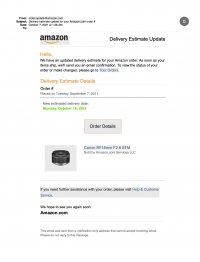That's the clever market strategy that camera manufacturers use. It works something like this:
- Build hype early! Give the market a drip feed of information and specs over many weeks or months before to get them worked up into a frenzy.
- Limit the information that reviewers can reveal to the public to maintain the mystery and get them speculating, this creates public focus on the unreleased product.
- Offer the public pre-orders so they can purchase the unreleased and unreviewed product they know nothing about. This allows money to be collected early, gives customers a sense of exclusivity, and the illusion that they have something before anyone else does. It also plays on the human fear of loss, FOMO (fear of missing out) is a strong motivator, people imagine there's a chance the product may sell out if they don’t order early, and may not have the chance to buy it on or soon after the release date..
- Only allow full reviews (which play up the pros and play down the cons otherwise no more toys to review next time) to be posted up on or after the release date.
- Delay shipments or limit stock as this produces a perception of scarcity and creates more demand. The psychological phenomenon of scarcity, in a marketing context, is the where, when a product or service is limited in availability (or perceived as being limited), it becomes more attractive.
If anyone
needs a tool, they usually require objective information about quality, durability, performance, etc unless they're not concerned about these and any tool close to spec will suffice. If they just
want it, that won't matter because these sale will be more emotionally driven. People buy with their emotions, and are
influenced by subconscious motivations.
Short answer, Canon will make you wait, and they'll drag it out as they always do, it's how the marketing game is played to mess with human emotions and increase sales!


